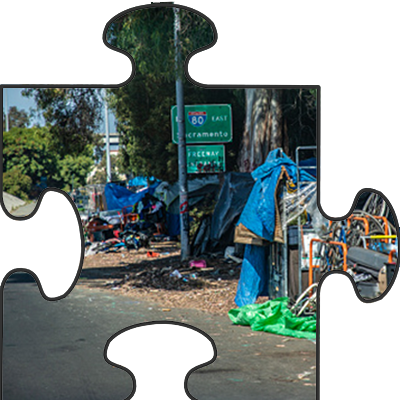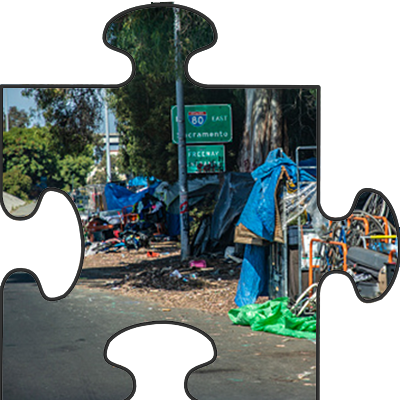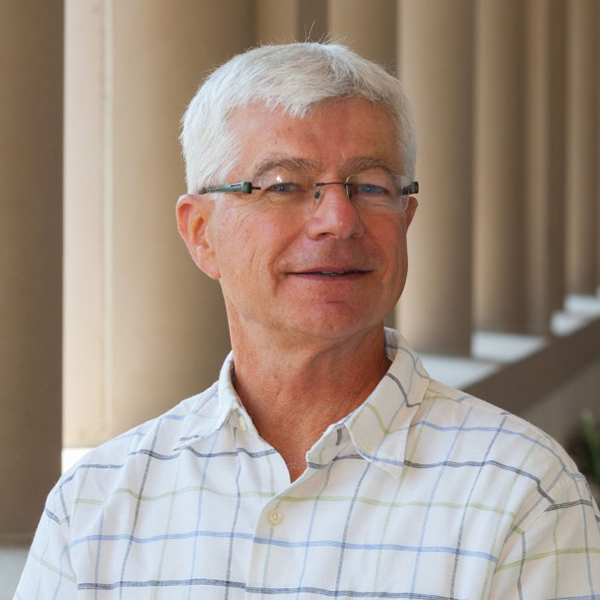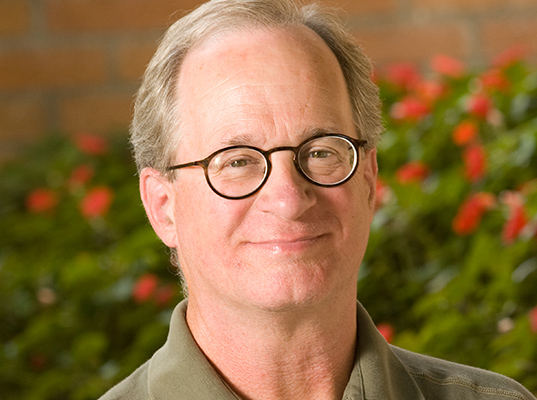
90 Years of Urban Policy at Price
Housing and Real Estate Policy
“Housing and real estate policies drive the quality of life in cities.”
Professor Richard Green

Faculty across the Price School consider the interconnections between housing, real estate and the quality of urban life. For example:
Price Professor and Director of the Lusk Center for Real Estate Richard Green’s research examines the causes of the current increase of unaffordable housing for low- and middle-income families in most U.S. metropolitan areas. Dr. Green also examines access to credit for credit-worthy individuals who may not meet traditional criteria. In addition, he looks at the impact of land use policy and zoning to accommodate more density and access to transit.
The issue of housing affordability requires accurate data. Associate Professor Christian Redfearn works to improve and refine our understanding of housing prices, both in aggregate and within metropolitan areas. His focus on urban and housing markets within metropolitan areas addresses the reality that policy is often improved by understanding economic dynamics at a more granular level. Professor Redfearn’s research provides compelling evidence that much is lost in aggregating across the diverse neighborhoods in urban areas.
Internationally, Price School Assistant Professor Jorge De la Roca examines the contribution of migration to the sorting of more productive workers into big cities. His findings demonstrate that people in larger cities trend to exhibit higher levels of education, occupational skills and individual productivity than those in smaller locales. Along with Dr. Green, he works to better understand what happens when people move from one city to another and the impact of talented people clustering in a small number of cities.
Professor Dowell Myers studies interconnections between housing shortages, affordability and displacement, and the relationship between owners and renters. In a recent study, he found that homeowners diverted into the rental market could account for as much as 15% of would-be renters in the Los Angeles area being dislodged.
Professor Gary Painter, Director of the Sol Price Center for Social Innovation, looks at what drives or hampers housing stability, and the impact of increasing rent burdens. In a recent op-ed, he underscores the need for innovations around housing policy and calls for specific planning policies to change to support affordability in California.
For further information, please visit:
priceschool.usc.edu/expertise/real-estate/
Homelessness Policy
“All eyes are on Los Angeles. Homelessness is a localized crisis and what we learn here has a big effect on other cities and many layers of government.”
Associate Professor Nicole Esparza

Tackling homelessness exemplifies the Price School’s integrated reach across the public, private and nonprofit spheres to solve critical social policy issues.
The Price School’s Homelessness Policy Research Institute, directed by Professor Gary Painter, is a county-wide effort that convenes over 30 scholars and policymakers to collaborate on research to end homelessness in Los Angeles. Dr. Painter’s research aims to understand the ecosystem of homelessness, recognizing the need to do work upstream around income inequality and to build more affordable housing for the middle class. With a recent increase in economic conditions alone cited as the sole cause, he notes that we need to work to prevent further economic homelessness.
To that end, Professor Richard Green, Director of the Lusk Center for Real Estate, is embarking on national research to better understand the antecedents to homelessness by taking a systematic look at its correlates. He will consider factors such as the number of houses built, levels of social service spending and unemployment rates.
Associate Professor Nicole Esparza focuses much of her research on how networks of nonprofits work together to address intractable problems. She is investigating nearly 250 Continuum of Care programs in cities across the country that are funded by the U.S. Department of Housing and Urban Development to alleviate homelessness. One of several goals is to determine the best way to configure networks to better provide housing for homeless individuals.
In addressing the role of philanthropy in reducing homelessness, the USC Center on Philanthropy & Public Policy, directed by Professor Jim Ferris, published a study examining how philanthropic leadership has positioned Los Angeles to better grapple with the enduring challenge of homelessness. The study documents philanthropy’s role in building a field that could respond to a mounting homelessness crisis and a platform for collaborative action that led two voter-approved ballot measures in 2016 and 2017.
For additional information, please visit:
Homeless Policy Research Institute
The Center on Philanthropy & Public Policy
Poverty and Inequality Policy
“Ultimately, growing inequality locks people into advantage and disadvantage, leaving many people behind. We pay attention to policies that can help people who are left behind.”
Professor LaVonna Lewis

The following examples represent research conducted across three Price School departments – Public Policy, Public Management, and Urban Planning and Spatial Analysis – underscoring the comprehensive approach employed at the school.
The Sol Price Center for Social Innovation aims to improve the quality of life for people in low-income, urban communities. Its robust Pathways to Opportunity research agenda leverages community partnerships to expand access to affordable housing, education, and economic opportunity for justice-involved individuals. They are also beginning a partnership with the Price School’s Safe Communities Institute to use neighborhood data to better understand communities and how they view public safety.
The Price School’s Spatial Analysis Lab (SLAB), directed by Associate Professor Annette Kim, works to support an inclusive city, aligning with a commitment to social justice and equity. Among SLAB’s research endeavors is working toward inclusion of marginalized populations in big data sets. If smart-city institutions rely on computer algorithms, some urban communities whose settlements are unplanned or unmeasured may be underrepresented. As Dr. Kim noted in The Atlantic, that means many of the poorest residents may be harmed by inadequately distributing public services in a smart city era. Price Assistant Professor Geoff Boeing is working at the cutting-edge of urban informatics as well, bringing tools to open-sourced data with the aim of bringing social justice and equity frames to smart cities.
Assistant Professor Nicolas Duquette is revisiting the War on Poverty legislation enacted under President Johnson in the early 1960s, with a specific focus on neighborhoods in Los Angeles that received resources from it. The legislation marked a new frontier for America in terms of data collection. Dr. Duquette is looking to answer this question: Did those anti-poverty resources help neighborhoods, or not, over the long run? When completed, he hopes the data will inform how best to make investments now to help lower-income people and how those investments could benefit the collective growth of the city.
For further information, please visit:
priceschool.usc.edu/expertise/social-innovation/
Transportation Policy
“Transportation mobility is critical to people’s lives and opportunities. Beyond access to jobs, transportation policy has a direct impact on our environment. The Price School uses a systems approach to look at both.”
Professor Genevieve Giuliano

Transportation systems connect people to work, school, activities and each other. Mobility challenges are most critical in urban areas. The Price School examines transportation systems and their overall impact, for example:
Professor Genevieve Giuliano directs the School’s METRANS Transportation Center, which works to solve transportation challenges in large metropolitan regions through data-driven research. For more than two decades, Dr. Giuliano and the Center have worked to make freight and passenger systems more efficient and sustainable. Researchers have developed methods for better processing at ports, routing through cities and logistics operations. Other Center work models how alternative fuel heavy duty trucks can be integrated into fleet operations and reduce emissions. METRANS also addresses transit problems in the area, often working directly with agency and community partners. One current project is centered in Southeast Los Angeles and aimed at developing recommendations, based on research and focus groups with residents, to improve public transit service, reduce local impacts of truck traffic, and reduce greenhouse gas emissions.
In addition to his national and international work on climate change and Café Standards, Professor Antonio Bento is currently looking at potential models for the design of congestion pricing strategies, for example, instituting road tolls in strategic ways to disincentivize automobile travel.
Looking at the link between transportation and housing, Marlon Boarnet, Chair of the Price School’s Department of Urban Planning and Spatial Analysis, studies displacement and housing development near rail transit stations in Los Angeles. That research, based on over 100 million geocoded income tax records, examines whether low-income households move out of rail neighborhoods more frequently after stations open. In addition, Dr. Boarnet looks at household driving and GHG emission reduction and has documented that infill development in Los Angeles can reduce household driving almost 20% compared to development in the suburbs.
For more information, please visit:
priceschool.usc.edu/expertise/transportation/
Sustainability and Environmental Policy

“Climate change policy is inextricably urban policy. It is in urban communities where the impact of climate change is felt, and it is in urban centers where solutions will play out.”
Professor Daniel A. Mazmanian

Environmental research conducted across the Price School directly informs policy and strategies not only in the Price School’s backyard, but also in communities across the country and around the globe. For example:
Professor Dan Mazmanian, Chair of the USC Presidential Working Group on Sustainable Education, Research and Operations, has published widely on environmental policy and sustainability, and has examined and developed local, state, national and international policies aimed at increasing sustainability. He served on several commissions in China and convened multiple entities in California to develop recommendations for the state’s adaptation strategies. Dr. Mazmanian also played a pivotal role in forging a research partnership with the Tsinghua School of Policy in Beijing and the Hertie School of Governance in Berlin on climate change policy.
Professor Antonio Bento conducts research in environmental, energy, urban and public economics, including empirical assessments of major public policy issues. He was the lead author in a study published in Science that illustrated flaws in the Trump Administration’s justification for a rollback of fuel economy standards, which received widespread media attention. Many groups – even automakers – have since called for the proposed rollback not to move forward. He participated in hearings on Capitol Hill to convey his findings. Internationally, he is working on a series of policy interventions around air quality emergencies in Beijing.
Professor Adam Rose evaluates the economic impacts of Climate Action Plans which typically strive to meet environmental objectives without negative side effects to the economy. Dr. Rose has evaluated plans in Florida, Pennsylvania, Michigan, Wisconsin, New York, and California, and notes, “Generally, Climate Action Plans have been able to meet their objectives.” He recently conducted an independent study on the economic impact of the Property Assessed Clean Energy (PACE) Program in Florida and California for the Schwarzenegger Institute for State and Global Policy that revealed significant positive effects. Dr. Rose also researches incentive-based instruments like carbon taxes and cap-and-trade, and resilience to natural disasters.
Professor Shui Yan Tang, chair of the Price School’s Department of Governance and Management, has amassed nearly 40 years of research around irrigation governance and environmental politics and policy. He’s directly engaged in California’s complex groundwater management challenges, most recently addressing necessary frameworks to facilitate cooperation among multiple local agencies and private landowners. Beyond California, Dr. Tang has done extensive environmental research internationally and published multiple studies examining, for example, environmental NGOs in China.
For further information, please visit:
priceschool.usc.edu/expertise/environment/
schwarzenegger.usc.edu/policy-areas/energy-and-the-environment
Urban Health Policy

“Through a coordinated effort, including the Price community, Los Angeles was the largest metropolis to add “health and wellness” to their General Plan, which directly impacts land use decisions.”
Professor David Sloan

The Price School produces world-renowned health policy research and houses the acclaimed Schaeffer Center for Health Policy & Economics. The Center’s work and the work of other Price School faculty also advances health outcomes in localized urban areas.
Professors LaVonna Lewis and David Sloane have researched for nearly 20 years the inequities in access to nutritious food options among local communities and the health disparities that result. They’ve detailed differences between wealthier areas of Los Angeles and poorer neighborhoods in East and South Los Angeles and found fewer supermarkets, more fast food restaurants and advertising skewed toward less healthy options. “Before you blame people for the choices they make, look at the choices,” notes Dr. Sloane.
The Los Angeles County Department of Public Health relied on the Schaeffer Center’s microsimulation efforts to analyze the long-term health effects of Proposition 56, the California Tobacco Tax for Healthcare, Research and Prevention Act of 2016, which increased taxes on cigarettes and other tobacco products in the state of California. The collaboration resulted in a new dynamic microsimulation, the Future Los Angeles Model, which projects future health and economic trends in the adult population of L.A. County. Using this model, the department mapped out the projected long-term impact of the proposed tax, including 50,000 fewer new adolescent and young adult smokers and 11,000 fewer premature deaths across the region.
In the ongoing fight against HIV and AIDS, the Schaeffer Center studied HIV prevention strategies in Los Angeles and found that the use of PrEP antiretroviral medications and a test-and-treat approach are both cost-effective ways to lower infection rates among high-risk men. The Center continues to collaborate with the health department, county hospital and UCLA.
As well, Schaeffer Center faculty have participated in a National Academy of Sciences committee looking at strategies for the prevention and control of sexually transmitted diseases across the United States.
For further information, please visit: